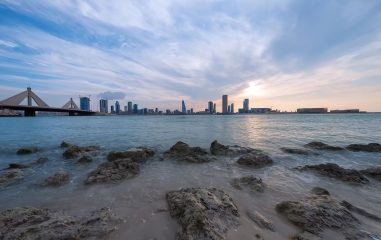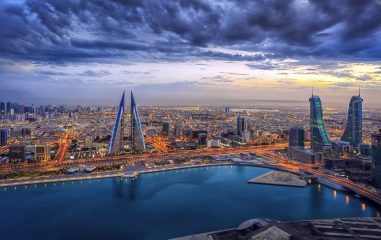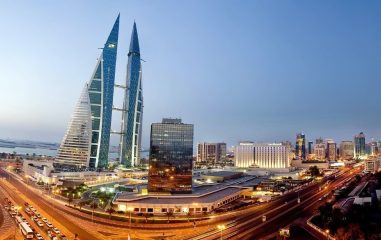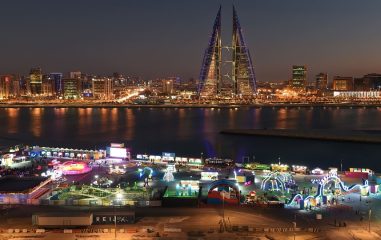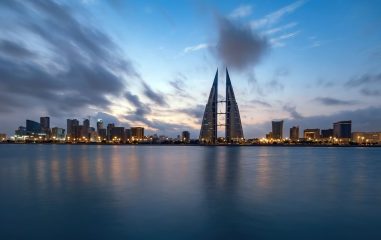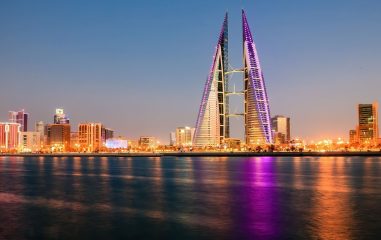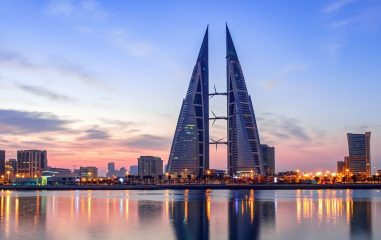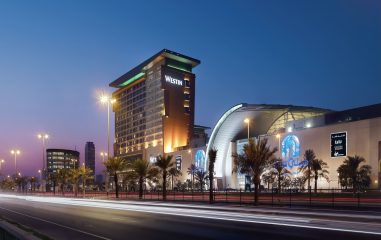BAHRAIN TRAVEL GUIDE
Food & Drinks in Bahrain
The variety of restaurants in Bahrain’s cuisine scene is outstanding. The principal dining room is Adliya. There are numerous cafés to choose from in Adliya, such as Coco’s (great cuisine at a reasonable price) and Lilou’s (extremely popular among residents who want to see and be seen). Mirai is an exceptional Japanese fusion restaurant that is perfect for special occasions. There are trendy salons/restaurants like Zoe’s and Block 338 in the area.
In Bahrain, restaurants range from modest booths offering indigenous food to upscale eateries in five-star hotels. Burger King and McDonald’s are two of the most well-known quick-service restaurants in the United States. In shopping malls and the city center, one can find high-priced Western-style meals and (mostly American) franchises serving upscale cuisine.
Juffair has a famous lane known as ‘American’s Alley’ as a result of the large number of American eateries in that vicinity.
It is essential to understand that national eating patterns vary. They correspond to the climate zones and cultural traditions of their respective states. The Kingdom of Bahrain is a melting pot of diverse cultures. Its original stocks of delicacies have remained intact and persisted for many years despite embracing the influence of the numerous civilizations that are prevalent there. Bahrain’s traditional cuisine consists of seafood, beef, rice, and dates. Machboos is one of the most well-known snacks. It contains either meat or fish. Muhammar is another popular dish. This dish consists of sweet rice served with cinnamon sugar.
Bahrainis also consume other national Arabic foods. These are falafel (breaded, fried chickpea balls) and Shawarma (lamb or chicken wrapped in pita bread). Samba and tasty, soft cookies are popular snacks in Brazil. For dinner, flavorful, light saffron noodles topped with a spicy omelet are frequently prepared. Quzi is an additional delicacy. This dish consists of fried lamb filled with hard-boiled eggs, onions, and various seasonings. Khobz is the typical soft, fluffy bread. This is a huge tortilla that has been roasted in a specialized oven. On the territory of the Arab nation, numerous Khobz bakeries may be found.
Lobster stew is an enduring classic dish. This meal is a perennial favorite among gourmets and enthusiasts of regional cuisine. Fresh fish from the Persian Gulf is another essential component of Bahraini cuisine. Here, perch is the most popular species of fish. Typically, it is grilled, fried in boiling olive oil, or steamed. Safi (tastes like rabbit), Chanad (mackerel), and Sobediti (bream) are also well-liked fish kinds. Most of the year, seafood is served with rice. Alternatively, it can be eaten with noodles. As a result of a century of British dominance in the Persian Gulf, the ubiquitous fish stew has been transformed into thin, deep-fried chips.
Here, the coffee is known as Gahwa. It is a customary component of the reception. It is typically put into a Lalla coffee pot. The aromatic beverage is served in a coffee cup called a finjan. Every family has a distinct, secret recipe for a strong drink. It is transmitted from one generation to the next. Bahrainis serve their guests scented pastries or oriental sweets with Gahwa. Their selection will amaze even the most discerning gourmands. Chocolate fudge should be consumed with a cup of coffee by every tourist who visits Bahrain.
Balaleet (breakfast) is the most significant meal in every culture in the world, including Bahrain. Balaleet is an exotic Eastern dish. It mixes sweet and tasty ingredients in a single performance. An omelet is placed on top of noodles with “sprouts” of sliced sweet and cardamom caramel. This makes the food satisfying. If you are trying the meal for the first time, you may need some time to adjust. However, you will like this dish once you understand its flavor. Children prefer Balaleet for breakfast because to its sweetness, flavor, and thinness.
The majority of locals eat a massive plate of rice and meat for lunch. The majority of Machboos is prepared at home or at restaurants. Machboos is a cuisine that all travelers must try. Machboos is prepared with a blend of spices including black lemon, saffron, black pepper, and cardamom that imparts a distinctive flavor. In Adhari, the tastiest Machboos is offered at Tabreez. This dish is an incredible favorite among Saudi locals who frequent the city’s restaurants.
Sambusa is another another tasty snack. It is ideal for any occasion. Meat, poultry, veggies, and cheese may be used as fillings for an Arabic snack. In Manama, the best Sambusa can be found at Abdul Kader. There, the service of countless visitors begins at 5 a.m. The tables are occupied almost always.
Country-specific culinary traditions are formed. There are numerous original dishes in the national cuisine. Traditional Arabic, Indian, and Pakistani meals are also available. Here, rice is quite popular. It is used as a side dish and in pilaf preparation. There are numerous types of pilaf available here. Chicken, limes, tomatoes, coriander, parsley, turmeric, garlic, ginger, and chili peppers are ingredients in a popular dish. The meal features a blend of spices including black pepper, cumin, coriander, cinnamon, cloves, cardamom, paprika, and nutmeg.
Rice is also utilized in the preparation of Machboos. This meal is prepared using fish or pork, garlic, cardamom, turmeric, white raisins, and tomatoes. Popular in Indian cuisine, a complex blend of spices known as masala is utilized in cooking. This meal is garnished with pine nuts and fresh herbs. For creating Tikka kebabs, two marinades are prepared: one from ginger and lemon juice, and the other from beetroot and yogurt. Various varieties of meat are used in the preparation process. The marinade gives it a wonderful, rich color and aroma.
Another notable beef dish is Dajaj. The chicken is cooked in tomato sauce. For its preparation, zucchini, potatoes, onions, and seasonings are utilized. All the ingredients are initially fried before being simmered for forty minutes. In the holy month of Ramadan, only light meals are consumed. Jarish is among these. It is made from wheat and beef, with oil or sheep fat added. Wheat can be steamed or boiled (coarse or fine grinding). It is served with cinnamon, sugar, and butter that has been melted. The consistency may be of varying densities. This dish has existed since the tenth century.
Kabsa is cooked differently depending on the country in which it is consumed. In its preparation, rice, veggies, and a variety of spices (available in pre-packaged spice blends) are utilized. Also utilized are chicken, goat, camel, beef, fish, and shrimp. Meat is typically prepared using the Mandi technique and a tandoor. Goji is a cuisine consisting of entire lamb roasted in an oven with rice, veggies, almonds, and spices.
Tabouleh salad is common in many Arab nations. Tomatoes, cucumbers, and onions are finely diced together with an abundance of greens for its preparation. Bulgur is included as well. The salad is prepared with lemon juice and olive oil.
Bahrain is a delight for candy lovers. In addition to the classic baklava and sherbets of many Arab countries, additional delicacies are created here. Traditional Habis is made using wheat and vegetable oil. It is served frequently during breakfast, particularly on religious festivals. The recipe first appears in a tenth-century handbook.
India contributed jalebi to the cuisine of Bahrain. The dish resembles traditional Turkish kunefe. In a bowl of melted butter, dough threads are readied for deep-frying. When Jalebi is done, sugar syrup, rose water, and lemon juice are poured over it. The recipe dates back to the thirteenth century. Ma’amoul is a cookie made from semolina or flour. It is frequently prepared at the conclusion of the holy month of Ramadan. It is provided with coffee to guests.
Umm Ali (Ali’s Mother) is reminiscent of a pudding prepared from shortbread, milk, sugar, almonds, and raisins. The meal should be consumed hot. The development of this meal is accompanied by a terrible legend. It was prepared by the wife of the Sultan of Egypt for the funeral of the Sultan’s second wife. Nonetheless, this meal is quite popular.
The dish known as mahalabia or muhallebi is an ancient one. In the seventh century, a Persian chef invented it. This is a milk pudding with rose water and pistachio pieces. The ingredients for pudding include rice, sugar, rice flour, and milk. The local Hanfroosh is a mini-donut spiced with saffron and cardamom. It is sweetened with honey and consumed warm.
Despite being a predominantly Muslim nation, alcoholic beverages are not prohibited. Beer and Arak (anise vodka) are the most common alcoholic beverages. Coffee is widely consumed. It can be cooked in numerous ways. One of them is flavored with saffron, cardamom, and rose water.
Food In Bahrain
Signature dishes
- Samosa – Samosa is a salty dough filled with potatoes, onions, peas, lentils, ground lamb, or chicken that is fried or baked.
- Khubz (flatbread). Almost all supermarkets and cold shops carry it.
Desserts
- Halwa Showaiter, also known as Halwa Bahraini, is the most popular traditional dessert. Corn starch, saffron, and a variety of nuts are used to make this gelatin-like halwa.
Vegetarian / Vegan
Vegetarian food is readily available in Bahrain; with the big Indian community, you need only visit any Indian restaurant to find a range of vegetarian options (some of which are pure-veg in that they do not have any non-vegetarian food). Aside from that, while restaurants typically offer something for vegetarians and vegans, the selection varies widely from establishment to establishment; for example, it is unlikely that you will find much at a modest Arabic restaurant. Typically, supermarkets and fast-food restaurants will also offer vegetarian selections.
Outside of specialty and upscale restaurants (and supermarkets), vegan selections are limited, and you may struggle to find good ones. Some establishments may be unfamiliar with the concept of veganism and may confuse it with vegetarianism.
Drinks In Bahrain
Bahrain has relatively permissive alcohol regulations, and it has long been a popular destination for tourists from Saudi Arabia and other neighboring “dry” nations. Expect to see Arabs in thobes and gutras sipping brewskis while watching the dancers show off their skills. the discotheques
Any indication of having drank alcohol may be regarded as prima facie proof of driving under the influence in Bahrain, which can result in imprisonment and/or penalties of up to BD 1,000.
In Bahrain, coffee, known locally as gahwa , is considered part of the customary greeting. It is usually put into a coffee machine, known in Bahrain as a dalla (). Finjan () is a tiny coffee cup that is used to serve it.

